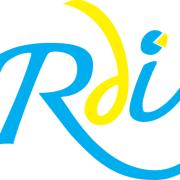การพัฒนาวิธีการปรับแก้คะแนนจุดตัดตามแนวคิดของ Angoff โดยประยุกต์ทฤษฎีการตอบสนองข้อสอบ
คำสำคัญ:
การพัฒนาวิธีการ, วิธีการปรับแก้คะแนนจุดตัด, วิธีการ Angoffบทคัดย่อ
การวิจัยนี้มีวัตถุประสงค์เพื่อพัฒนาวิธีการปรับแก้คะแนนจุดตัดตามแนวคิดของ Angoff โดยประยุกต์ ทฤษฎีการตอบสนองข้อสอบ และเปรียบเทียบคะแนนจุดตัดตามแนวคิดของ Angoff ต้นแบบกับแบบใหม่ ที่พัฒนาขึ้น จำแนกตามประสบการณ์และระดับการศึกษาของผู้ตัดสิน มีวิธีดำเนินการวิจัย 2 ระยะ ได้แก่ 1) ศึกษาและพัฒนาวิธีการกำหนดคะแนนจุดตัดตามแนวคิดทฤษฎีการตอบสนองข้อสอบ และ 2) เปรียบเทียบ คะแนนจุดตัดตามแนวคิดของ Angoff ระหว่างวิธีต้นแบบกับแบบใหม่ที่พัฒนาขึ้น ผลการวิจัยปรากฏว่า (1) วิธีการปรับแก้คะแนนจุดตัดตามแนวคิดของ Angoff โดยประยุกต์ทฤษฎีการตอบสนองข้อสอบมี 5 ขั้นตอน คือ 1) การเลือกข้อสอบ 2) การวิเคราะห์ข้อสอบตามทฤษฎีการตอบสนองข้อสอบ 3) การจัดเรียงข้อสอบ 4) การฝึกอบรมวิธีการกำหนดคะแนนจุดตัด และ 5) ผู้ตัดสินประมาณค่าความน่าจะเป็นในพิจารณาการตอบ ข้อสอบแต่ละข้อถูก ภายใต้การตัดสิน 3 รอบ (2) ผลการเปรียบเทียบคะแนนจุดตัดตามแนวคิดของ Angoff ต้นแบบกับแบบใหม่ที่พัฒนาขึ้นโดยประยุกต์ทฤษฎีการตอบสนองข้อสอบของผู้ตัดสินที่มีประสบการณ์และ ระดับการศึกษาแตกต่างกันให้คะแนนจุดตัดทั้งสองวิธีไม่แตกต่างกัน แต่มี 2 กลุ่มสาระ คือ วิทยาศาสตร์ และ สังคมศึกษา ศาสนา และวัฒนธรรมของผู้ตัดสินที่มีระดับการศึกษาต่างกันให้คะแนนจุดตัดแตกต่างกันอย่างมี นัยสำคัญทางสถิติที่ระดับ 0.05 (p. <0.05)
Downloads
เอกสารอ้างอิง
ศิริชัย กาญจนวาสี. (2555). ทฤษฎีการทดสอบแนวใหม่. (พิมพ์ครั้งที่ 4). กรุงเทพมหานคร : โรงพิมพ์ แห่งจุฬาลงกรณ์มหาวิทยาลัย.
Barman, A. (2008). Standard setting in student assessment: Is a defensible method yet to come?. Annals Academy of Medicine Singapore. 37(11), pp. 957-563.
Berk, R. A. (1986). A Consumer’s Guide to Setting Performance Standards on Criterion- Referenced Test. Review of Educational Research. 56(Spring), pp. 137-172.
Carlson, J., Tomkowiak, J., & Stilp, C. (2009). Using the Angoff Method to Set Defensible Cutoff Scores for Standardized Patient Performance Evaluations in PA Education. Journal of Physician Assistant Education (Physician Assistant Education Association). 20(1), pp. 15-23.
Chapman, B. (2014). Angovian Methods for Standard Setting in Medical Education: Can They Ever Be Criterion Referenced?. International Journal of Learning, Teaching and Educational Research. 4(1). pp. 1-26.
Cizek, G. J. (2001). Conjectures on the rise and call of standard setting: An introduction to context and practice. Setting Performance Standards: Concepts, Methods and Perspectives. pp. 3-17.
Cizek, G.J., & Bunch, M.B. (2007). Standard Setting: A Guide to Establishing and Evaluating Performance Standard on Tests. Thousand Oaks : SAGE Publications.
Cohen-Schotanus, J., & van der Vleuten, C. P. (2010). A standard setting method with the best performing students as point of reference: practical and affordable. Medical Teacher. 32(2), pp. 154-160.
Dagogo, J. P. (2014). Comparison of Outcome of Students’ Performance Using the Standard Setting Method with the Absolute Grading Method in Preclinical Examination. Nigerian Journal of Physiological Sciences. 29(2), pp. 103-106.
Ferdous, A. & Plake, B. S. (2005). The use of subsets of test questions in an Angoff standard setting method. Educational and Psychological Measurement. 65(2), pp. 185-201.
Gronlund, N.E. (1982). Construting Achievement Test. (3rd ed). Englewood Cliffs, New Jersey : Prentice Hall.
Hambleton, R. K., & Pitoniak, M. J. (2006). Setting performance standards. In R. Brennan (Ed.), Educational Measurement. (4th ed., pp. 433–470). Westport, CT: Praeger Publishers.
Hejri, S. M., & Jalili, M. (2014). Standard setting in medical education: fundamental concepts and emerging challenges. Medical Journal of the Islamic Republic of Iran. 28 (34), pp. 1-6.
Hess, B., Subhiyah, R. G., & Giordano, C. (2007). Convergence between cluster analysis and the Angoff method for setting minimum passing scores on credentialing examinations. Evaluation & the Health Professions. 30(4), pp. 362-375.
Impara, J. C., & Plake, B. S. (1998). Teachers’ Ability to Estimate Item Difficultly: A Test of The Assumptions in the Angoff Standard Setting Method. Journal of Education Measurement. 35 (1), pp. 69-81.
Jalili, M., Hejri, S. M., & Norcini, J. J. (2011). Comparison of two methods of standard setting: the performance of the three-level Angoff method. Medical Education. 45 (12), pp. 1199-1208.
Kane, M.T. (1994). Validating the performance standards associated with passing scores. Review of Educational Research. 64(3), pp. 425-461.
Lee, G. & Lewis, D. M. (2008). A generalizability theory approach to standard error estimates for bookmark standard settings. Educational and Psychological Measurement. 68(4), pp. 603-620.
Pant, H. A., Rupp, A. A., Tiffin-Richards, S. P., & Köller, O. (2009). Validity issues in standard-setting studies. Studies in Educational Evaluation. 35(2-3), pp. 95-101.
Peterson, C. H., Schulz, E. M., & Engelhard Jr., G. (2011). Reliability and validity of bookmark-based methods for standard setting: Comparisons to Angoff-based methods in the National Assessment of Educational Progress. Educational Measurement: Issues and Practice. 30(2), pp. 3-14.
Shulruf, B., Wilkinson, T., Weller, J., Jones, P., & Poole, P. (2016). Insights into the Angoff method: results from a simulation study. BMC Medical Education. 16(1), pp. 134-148. Smith, R. W., Davis-Becker, S. L., & O’Leary, L. S. (2014). Combining the best of Two Standard Setting Methods: the Ordered Item Booklet Angoff. Journal of Applied Testing Technology. 15(1), pp. 18-26.
Zieky, M. J., Perie, M., & Livingston, S. A. (2008). Cut Scores: A Manual for Setting Standards of Performance on Educational and Occupational Tests. Educational Testing Service.
ดาวน์โหลด
เผยแพร่แล้ว
รูปแบบการอ้างอิง
ฉบับ
ประเภทบทความ
สัญญาอนุญาต
ลิขสิทธิ์ (c) 2021 มหาวิทยาลัยราชภัฏธนบุรี

อนุญาตภายใต้เงื่อนไข Creative Commons Attribution-NonCommercial-NoDerivatives 4.0 International License.
บทความที่ได้รับการตีพิมพ์เป็นลิขสิทธิ์ของมหาวิทยาลัยราชภัฏธนบุรี
ข้อความที่ปรากฏในบทความแต่ละเรื่องในวารสารวิชาการเล่มนี้เป็นความคิดเห็นส่วนตัวของผู้เขียนแต่ละท่านไม่เกี่ยวข้องกับมหาวิทยาลัยราชภัฏธนบุรีและบุคลากรท่านอื่น ๆ ในมหาวิทยาลัยฯ แต่อย่างใด ความรับผิดชอบองค์ประกอบทั้งหมดของบทความแต่ละเรื่องเป็นของผู้เขียนแต่ละท่าน หากมีความผิดพลาดใด ๆ ผู้เขียนแต่ละท่านจะรับผิดชอบบทความของตนเองแต่ผู้เดียว






